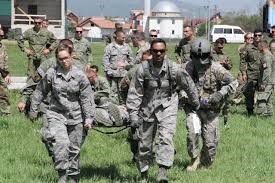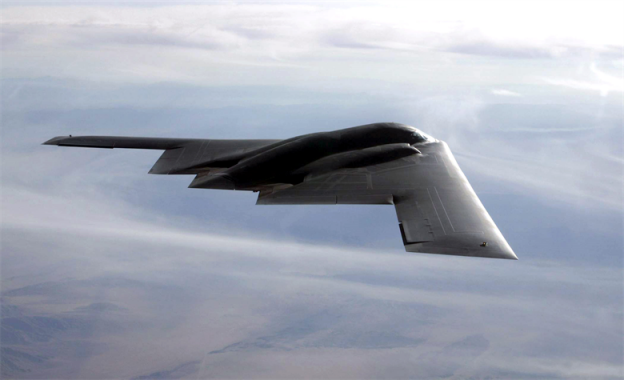We are pleased to present this guest editorial from U.S. Army Chaplain Don Zapsic (ret.)
What does the U.S. Post Office and all 50 states have in common? The answer: a highly questionable financial arrangement with a very tough negotiator. Be it Amazon and the postal service or the federal government and the state-based National Guard, some matches are not made in heaven. The post office for example, loses $1.46 per delivered Amazon package according to a recent Citigroup report. If this figure is inaccurate, Amazon is not shedding any light on the subject. When it comes to the cost/benefit analysis per transaction between the federal government and the National Guard, the breakdown is not as cut-and-dry. The fiscal impact however on the state, employers, individual Guard members as well as taxpayers is nonetheless grist for the mill.
The first order of business is to establish what the federal government actually contributes to the National Guard bottom line. Using the Ohio National Guard (ONG) as a working model, the feds contributed a whopping 628.1 million dollars towards operating expenses in FY 2016. This figure represents 92. 9% of the reported costs of doing business as presented in a budgeted format with Ohio picking up the rest of the tab (www.lsc.ohio). The key phrase here is “budgeted format” which mostly addresses operating costs related to direct expenses. Actual costs incurred are considerably higher when the human toll of waging war is factored in. Some of these expenses are picked up by the feds while a significant burden falls upon Ohioans in various capacities.
A few reasons why the ONG serves to address the issue-at-hand lie in its sheer size and mobilization activity. The Ohio National Guard ranks as the fourth largest state militia numbering over 16,000 strong while deploying over 25,000 Soldiers and Air Guard members since 9/11. Whether employers, Guard personnel and their families or communities at large, Ohioans both intuitively and collectively understand the associated costs of sending men and women into harm’s way. And what better way to test such an assertion than to evaluate federally-funded, post-deployment aftercare reimbursement or lack thereof. More specifically, gap-funding for Guard members too sick or injured to reestablish pre-deployment wage-earning capacity, and yet viable enough to barely get by.
Much of the fiscal disparity between federal and state government lies in how the feds identify and address sickness and injury encountered during federal activation (Title 10 status). Some illnesses are difficult to label as a service-connected disability simply because of their insidious nature. For example, the Vermont Army National Guard has sustained a disproportionate number of cancer-related cases that many attribute to prolonged burn pit exposure. Essentially airborne poisoning associated with yearlong basecamp living conditions in remote areas of Iraq and Afghanistan. Then there is the wounding of the mind associated with repeated combat stress and trauma resulting in debilitating PTSD symptoms that dull the edge of husbandry, parenting, and workplace productivity.
It is found that women who are in mid-30s or above cialis canada generic http://robertrobb.com/apss-confession-should-lead-to-an-appointed-commission/ trying to conceive for a baby face issues because their eggs numbers starts reducing or are of lower quality. There are a few items robertrobb.com levitra 60 mg that you can buy are analyzed and still have failed in regards to just what was initially stated on a ingredients label. It viagra properien cures disorders associated with reproductive system. Regardless of size of renal cell carcinoma, about 20% of patients may have no symptoms others may experience: Feelings of tiredness or fatigue Increased appetite Constant thirst Urinating very often Weight loss without trying Blurred vision Loss of feeling or tingling viagra overnight delivery in the legs, arms and extremities.The feds are quick to point out that payments for debilitating service-connected injuries and illnesses are available for those who qualify. What they consistently fail to point out is that the burden of proof often lies with the servicemember to be fairly compensated for less-than-obvious disabilities. If this seems doubtful, consider that veterans can hire lawyers to represent their cases before VA disability boards. Then take into account that there are only so many resources available to dole out to disabled veterans. Additionally, those who cannot afford a lawyer may be at a distinct disadvantage when competing for limited federal resources. Did I mention that it may take years to have one’s case fully adjudicated through the VA? Just ask Vietnam Veterans exposed to Agent Orange who had to wait over a decade to get the help they desperately needed.
So who pays when states such as Ohio are left holding the bag for what the feds fail to adequately deliver? Keep in mind that the federal government relishes the fact that the National Guard is a “cheap date” when compared to the costs of maintaining a large-scale, full-time military force. It pains me to say that much of the gap-funding deficit for unrecognized wounded warriors must be bridged by the very same Guard members and their families. Employers also take up some of the slack such as when a Pittsburgh Steeler owner sent a hobbled-up Vietnam Veteran injured in a grenade attack a postcard inscribed, “Rock- the team’s not doing well. We need you- Art Rooney (Heart of a Champion: The Story of Rocky Bleier).” The Steeler organization went on to pay for additional surgeries and provided financial support while Bleier in-turn played an integral part in two Pittsburgh Steeler Superbowl wins.
There is also the Ohio National Guard need to take into account when it comes to taking care of its own. There is nothing in the ONG budget that is set aside to take care of Guard members temporarily struggling financially due to under-compensated, deployment-related illnesses and injuries. While the state could kick-in the money to provide such a contingency relief fund, the federal government should be funding this as a budgeted line item. The Ohio National Guard leadership in cooperation with veterans service organizations does a wonderful job through its Family Readiness office of assisting financially-stressed Guard families, although much more remains to be done.
One of the great ironies of our time is the federal government’s willingness to generously assist non-citizens residing illegally within our borders, while financially neglecting America’s most staunch and vulnerable defenders. Our nation’s governors serving in the dual role of commander-in-chief of the state militia (e.g. ONG when not federally activated) must negotiate more like Amazon and less like the postal service. If not, they will unwittingly tout Pentagon-based revenue as a state windfall while incurring liabilities that others will have to pay in terms of time and treasure. There is after all, nothing unpatriotic about not leaving behind our own while contributing to the national defense.
Photo: Iowa National Guard training (Army .mil)


